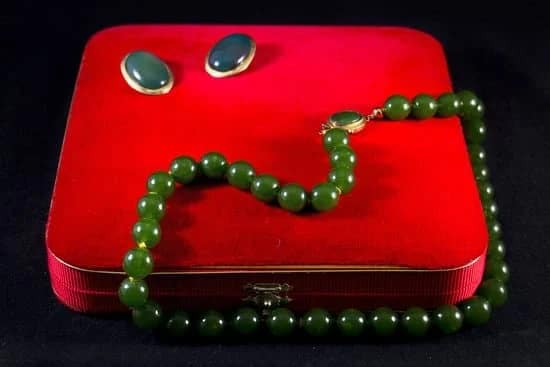Pricing handmade beaded jewelry is a crucial aspect of running a successful jewelry-making business. Setting the right price not only ensures that you cover your costs but also determines your profit margin and positions your products in the market. In this article, we will delve into the various factors to consider when pricing handmade beaded jewelry, along with different pricing strategies to help you maximize your earnings.
When it comes to pricing handmade beaded jewelry, there are several key factors to take into account. These include the cost of materials used in creating each piece, the time spent on production, the demand for your jewelry in the market, and the competition you face from other jewelry makers. By carefully considering these factors, you can arrive at a pricing strategy that reflects the value of your unique creations while remaining competitive in the market.
In the following sections, we will explore different pricing strategies such as markup pricing, value-based pricing, and competitor-based pricing. We will also provide insights on how to calculate the cost of materials for your handmade beaded jewelry and determine the labor cost involved in creating each piece. By understanding these essential components of pricing, you can make informed decisions that not only sustain your business but also enable it to thrive in today’s competitive handmade jewelry market.
Factors to Consider When Pricing Handmade Beaded Jewelry
When pricing handmade beaded jewelry, there are several factors to consider to ensure that you are setting the right price for your unique creations. One of the most critical aspects is taking into account the materials cost. Beads, threads, clasps, and any other supplies used in jewelry making all contribute to the overall production cost.
Additionally, considering the time spent on production is essential. Calculating the value of your time spent creating each piece will help you determine a fair labor cost for your handmade beaded jewelry.
Market demand and competition are also important factors to consider when pricing your handmade beaded jewelry. Understanding what customers are willing to pay for similar products in the market can give you valuable insights into setting competitive prices. By conducting research on your competitors’ pricing strategies and analyzing market demands, you can position your handmade beaded jewelry effectively to attract customers while ensuring profitability.
In order to set competitive prices for your handmade beaded jewelry, it is crucial to strike a balance between covering costs and making a profit. Pricing strategies such as markup pricing, value-based pricing, and competitor-based pricing can help guide you in determining the optimal price points for your products. By carefully considering all these factors, you can establish fair and attractive pricing for your handmade beaded jewelry that appeals to customers while also ensuring financial sustainability.
| Factors | Considerations |
|---|---|
| Materials Cost | Be sure to account for beads, thread, clasps, and all other supplies used in crafting |
| Time Spent on Production | Calculate the value of your time creating each piece of jewelry accurately |
| Market Demand and Competition | Research competitors’ prices and analyze market trends to set competitive prices |
By carefully considering these factors and adopting appropriate pricing strategies, you can ensure that your handmade beaded jewelry reflects its true value while appealing to customers in a competitive market. Remember that finding the right balance between covering costs, making a profit, and attracting customers is key to successfully pricing handmade beaded jewelry.
Pricing Strategies for Handmade Beaded Jewelry
Pricing handmade beaded jewelry is a crucial aspect of running a successful business in the jewelry-making industry. Setting the right price not only ensures that you cover your costs but also allows you to make a profit and stay competitive in the market. When determining how to price your handmade beaded jewelry, it’s essential to consider various factors such as materials cost, time spent on production, market demand, and competition.
One of the pricing strategies that you can use for your handmade beaded jewelry is markup pricing. With markup pricing, you calculate the cost of materials and production and then add a certain percentage on top to determine the final selling price. This method is simple and straightforward, making it suitable for beginners in the jewelry-making business.
Another strategy is value-based pricing, where you set prices based on the perceived value of your jewelry to customers. This approach requires understanding customer preferences and willingness to pay for unique handmade pieces.
Competitor-based pricing is another strategy that involves researching and analyzing the prices set by your competitors for similar handmade beaded jewelry products. By knowing what your competitors are charging, you can adjust your prices accordingly to stay competitive in the market.
It’s essential to strike a balance between setting competitive prices and ensuring that they cover your costs and allow for a reasonable profit margin. By incorporating these pricing strategies into your business model, you can successfully price your handmade beaded jewelry for optimal financial success.
| Pricing Strategy | Description |
|---|---|
| Markup Pricing | Calculating costs and adding a percentage for profit |
| Value-Based Pricing | Setting prices based on perceived customer value |
| Competitor-Based Pricing | Adjusting prices based on competitor pricing analysis |
Calculating the Cost of Materials
When pricing handmade beaded jewelry, one of the critical factors to consider is the cost of materials used in creating each piece. Understanding the breakdown of costs for beads, thread, clasps, and any other materials utilized is essential in setting a competitive and profitable price for your jewelry pieces. Here are some key points to consider when calculating the cost of materials:
- Beads: The type and quality of beads used in your handmade jewelry can significantly impact the overall cost. Whether you use glass beads, gemstones, or pearls, it’s crucial to track the expenses associated with purchasing these materials.
- Thread: The thread or wire used to string beads together is another essential component to consider when calculating material costs. Different types of threads or wires come at varying prices, so it’s important to account for this expense in your pricing strategy.
- Clasps: Clasps are necessary for fastening bracelets, necklaces, or anklets together. Depending on the style and material of the clasp used, this component can also contribute to the overall cost of producing your handmade beaded jewelry.
- Other Materials: In addition to beads, thread, and clasps, there may be other materials such as charms, pendants, or findings that you incorporate into your designs. It’s essential to factor in the cost of these additional components when determining the total material expenses for each piece.
Calculating the precise cost of materials for each piece of handmade beaded jewelry allows you to establish a baseline for setting your prices. By keeping detailed records of material expenses and regularly reviewing supplier options for more cost-effective alternatives, you can ensure that your pricing remains competitive while maintaining a healthy profit margin.
Additionally, understanding how changes in material costs can impact your overall pricing strategy is crucial for adapting to market fluctuations and evolving customer preferences. By staying informed about industry trends and adjusting your pricing accordingly based on material costs, you can position your handmade beaded jewelry business for long-term success in a competitive market focused on quality craftsmanship.
Determining the Labor Cost
Hourly Rate Calculation
When it comes to pricing handmade beaded jewelry, one crucial factor to consider is the value of the time you spend on creating each piece. Calculating your hourly rate can help ensure that you are adequately compensated for your labor.
To determine your hourly rate, start by considering how much you would like to earn per hour based on your skill level and experience. Factor in any additional costs such as overhead expenses or taxes that may affect your final pricing.
Time Tracking
To accurately calculate the labor cost for each piece of handmade beaded jewelry, it is essential to track the time spent on production. Keep a detailed log of the time spent on tasks such as designing, stringing beads, attaching clasps, and any other steps involved in the jewelry-making process. This will not only help you determine an accurate labor cost but also improve your efficiency over time by identifying areas where you can streamline your workflow.
Importance of Fair Compensation
Setting a fair labor cost for your handmade beaded jewelry is vital not only for covering your expenses but also for valuing your skills and creativity as a jewelry maker. Underpricing your work can undermine the perceived value of your pieces and make it challenging to sustain your business in the long run.
By calculating a reasonable hourly rate and factoring it into your pricing strategy, you can ensure that each piece reflects both the materials used and the artistic effort put into its creation. Balancing affordability for customers with fair compensation for yourself is key to building a successful handmade jewelry business.
Pricing Examples
Pricing handmade beaded jewelry can be a challenging task for artisans. It is essential to strike the right balance between covering costs and making a profit while ensuring that the price is attractive to potential customers. To help you navigate this process, here are some pricing examples with formulas for different types of handmade beaded jewelry:
- Markup Pricing: One common pricing strategy is to use markup pricing, where you add a percentage on top of your total costs to determine the selling price. For example, if your materials cost $10 and you decide on a 50% markup, the selling price would be $15 ($10 + $5 markup).
- Value-Based Pricing: Another approach is value-based pricing, where you set your prices based on the perceived value of your jewelry in the market. Consider factors such as unique design, quality materials, and craftsmanship when determining your prices.
- Competitor-Based Pricing: Researching the prices of similar handmade beaded jewelry in the market can also guide your pricing decisions. You may choose to price your pieces competitively or differentiate them through higher quality or unique features.
When determining the pricing for your handmade beaded jewelry, it’s crucial to factor in not only material costs but also the time spent on production, market demand, and competition. By utilizing different pricing strategies and considering these key elements, you can establish prices that reflect the value of your creations while appealing to potential customers interested in unique and handcrafted jewelry. Balancing these factors will ensure that your business remains sustainable and profitable in the long run.
Pricing for Profit
When it comes to pricing handmade beaded jewelry, one of the most important considerations is ensuring that your prices not only cover your costs but also allow for a healthy profit margin. Without setting the right price, you may end up losing money on each sale or undervaluing your work. In this section, we will delve into some tips on how to effectively price your handmade beaded jewelry to ensure profitability.
Factor in All Costs
To accurately price your handmade beaded jewelry, it is crucial to consider all costs involved in the production process. This includes not only the cost of materials such as beads, thread, and clasps but also any overhead expenses like packaging materials, tools, and marketing. By accounting for all these expenses, you can determine a baseline price that covers your costs.
Set a Fair Markup
Once you have calculated the total cost of producing each piece of jewelry, the next step is to determine a reasonable markup percentage that will allow you to generate profit. While there is no one-size-fits-all markup percentage for pricing handmade beaded jewelry, a common approach is to aim for at least a 50% markup from costs. However, depending on factors like market demand and competition, you may need to adjust your markup accordingly.
Consider Perceived Value
In addition to covering your costs and setting a profitable markup, it’s important to consider the perceived value of your handmade beaded jewelry when pricing. Factors such as craftsmanship, unique design elements, and brand reputation can influence how customers perceive the value of your pieces. By highlighting these aspects in your marketing strategy and product descriptions, you can justify higher prices for your jewelry and attract customers willing to pay premium prices for handcrafted pieces.
The Psychology of Pricing
When it comes to pricing handmade beaded jewelry, it is essential to understand the psychology behind pricing and how it can influence customer perception. The price of a product often serves as a signal of its quality and value, impacting how customers perceive the worth of the jewelry they are considering purchasing. By strategically setting prices for your handmade beaded jewelry, you can effectively communicate the craftsmanship, uniqueness, and desirability of your pieces to potential buyers.
One important aspect to consider when pricing handmade beaded jewelry is the concept of perceived value. Customers are more likely to be willing to pay higher prices for jewelry that they believe offers high quality, unique designs, and artisanal craftsmanship. By pricing your handmade beaded jewelry at a level that aligns with these perceived values, you can attract customers who appreciate the time and skill that goes into creating each piece.
Another psychological factor to keep in mind when pricing handmade beaded jewelry is the anchoring effect. This cognitive bias refers to the tendency for individuals to rely heavily on the first piece of information they receive when making decisions.
By strategically presenting your price points in relation to other similar or competing products in the market, you can anchor customers’ expectations around the value of your handmade beaded jewelry. This can help set a reference point that influences how customers perceive the affordability and desirability of your pieces compared to others on the market.
Conclusion
Setting the right price for handmade beaded jewelry is crucial for artisans and jewelry makers to sustain their business successfully. By considering factors like materials cost, labor, market demand, and competition when pricing their creations, they can ensure that their prices are both competitive and profitable. Pricing strategies such as markup pricing, value-based pricing, and competitor-based pricing can help them determine the optimal price point for their products.
Calculating the cost of materials and determining the labor cost are essential steps in setting a fair price for handmade beaded jewelry. Understanding how much it costs to make each piece allows artisans to set a price that covers their expenses while also accounting for their time and effort.
By utilizing pricing examples provided in this article, artisans can gain a better understanding of how different formulas can help them arrive at a suitable price for various types of jewelry pieces.
In conclusion, pricing handmade beaded jewelry requires careful consideration of both costs and market dynamics. By following the strategies outlined in this article and applying sound pricing principles, artisans can position themselves effectively in the market while ensuring that they are compensated fairly for their creativity and craftsmanship.
Ultimately, setting the right price not only benefits the artisan but also influences customer perception and sales. So remember to take your time in accurately calculating your costs when pricing handmade beaded jewelry to achieve success in your business endeavors.
Frequently Asked Questions
How Do You Calculate Handmade Jewelry Prices?
Calculating handmade jewelry prices involves considering a variety of factors such as the cost of materials, labor, overhead expenses, and desired profit margin. It is important to be mindful of the market trends and competition while setting prices to ensure profitability.
Do Beaded Bracelets Sell Well?
Beaded bracelets can indeed sell well, as they are popular accessories that appeal to a wide range of customers. The key to success lies in offering unique designs, high-quality materials, and staying updated with current fashion trends to attract buyers.
Is Selling Beaded Jewelry Profitable?
Selling beaded jewelry can be profitable if done strategically. By focusing on creating distinctive designs, using high-quality materials, and pricing competitively, one can attract customers willing to pay for handmade craftsmanship. Marketing efforts and online presence also play vital roles in driving sales and increasing profitability.

Welcome to my jewelry blog! My name is Sarah and I am the owner of this blog.
I love making jewelry and sharing my creations with others.
So whether you’re someone who loves wearing jewelry yourself or simply enjoys learning about it, be sure to check out my blog for insightful posts on everything related to this exciting topic!





